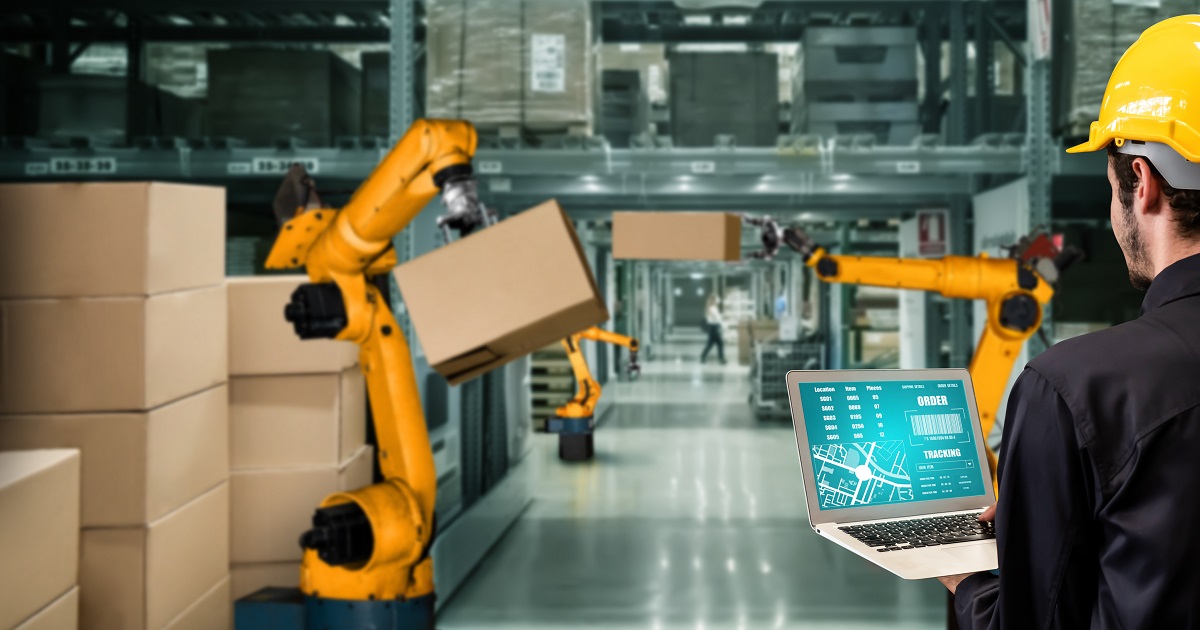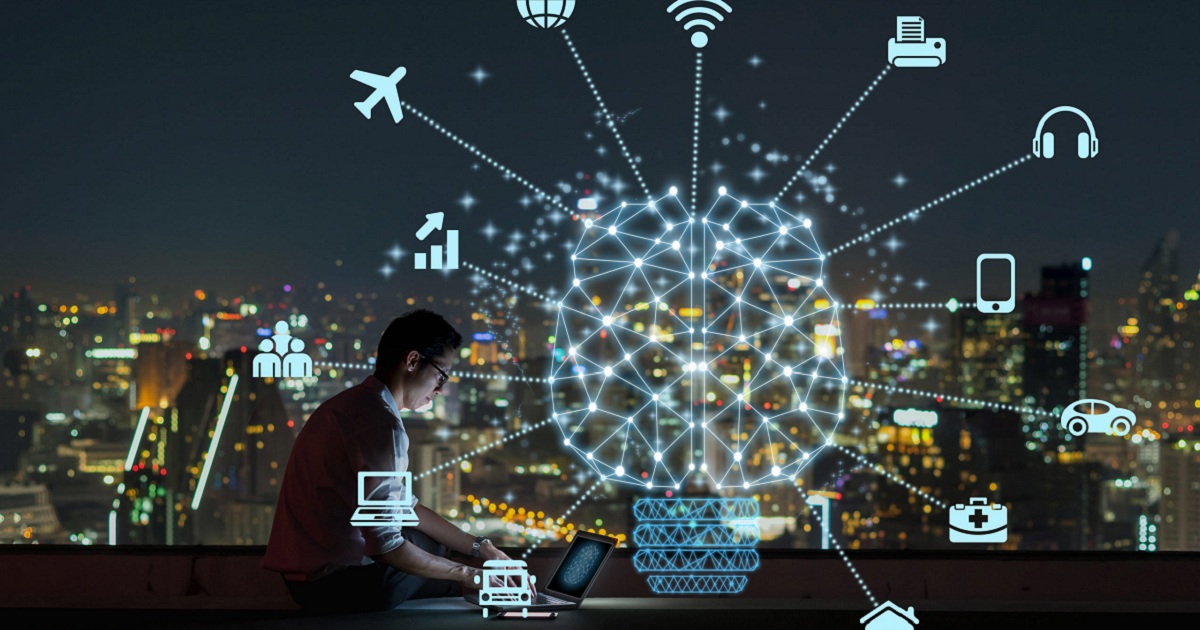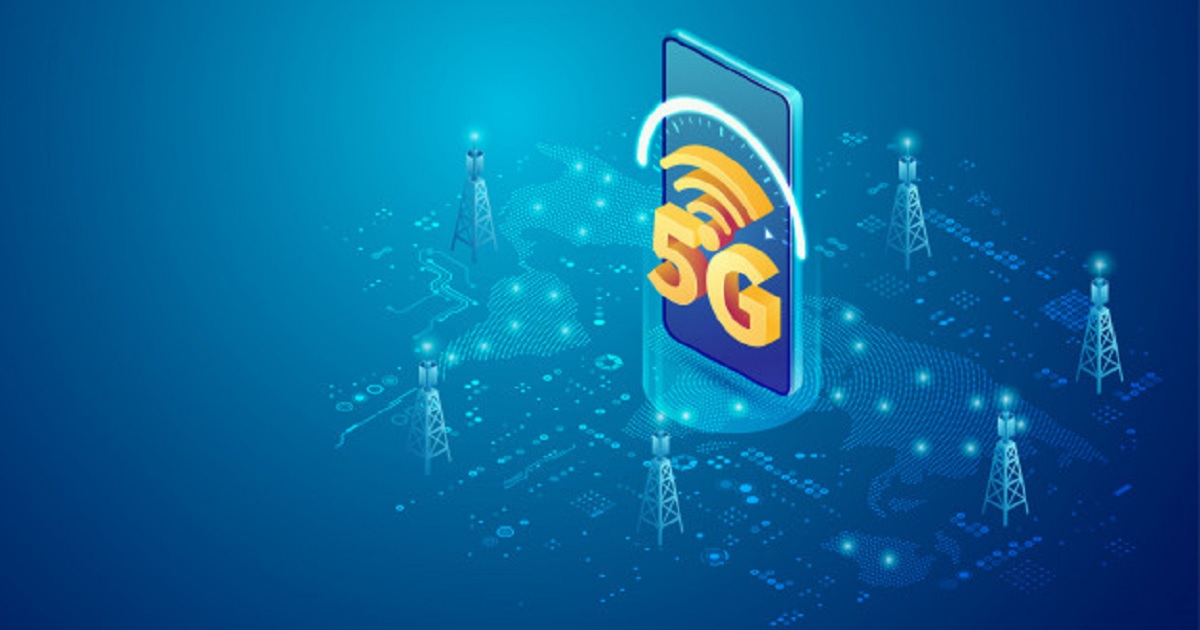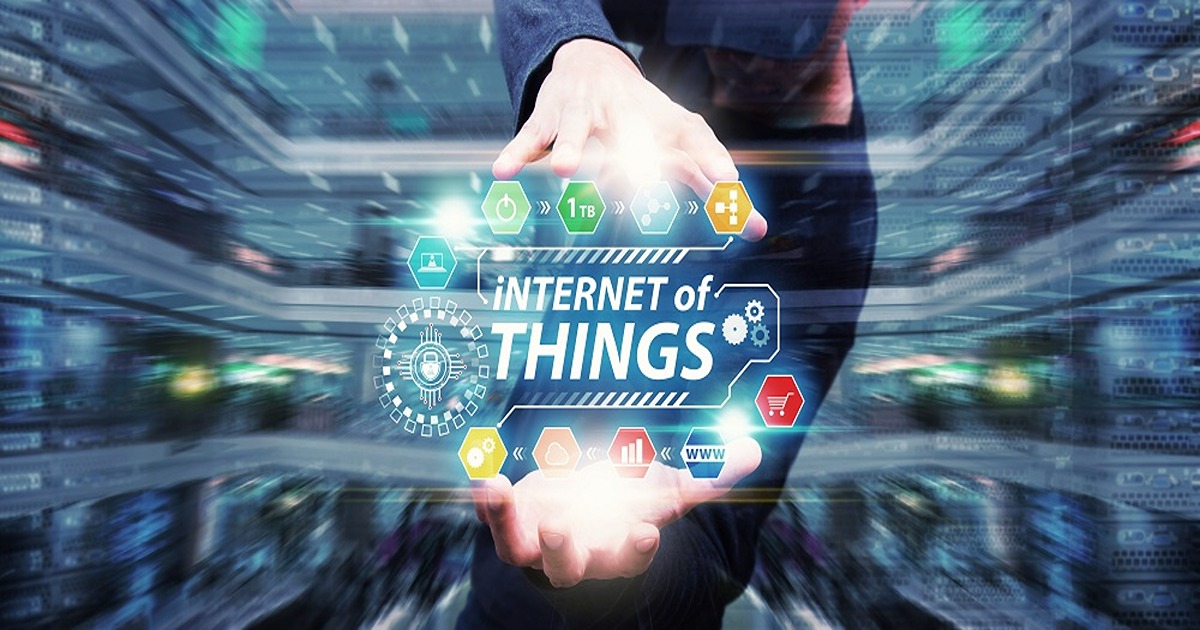
Industrial IoT, IoT Security
Article | July 11, 2023
Introduction
Automation, interconnectivity, machine-learning, and real-time data are part of Industry 4.0, a new phase in the Industrial Revolution. Industry 4.0, which includes IIoT and smart manufacturing, combines physical production and operations with smart digital technologies. It creates a more holistic and linked environment for manufacturing and supply chain management organizations.
In today's production environment, "automation" has a new, more advanced meaning than it has in the past. Industry 4.0 refers to the necessity of lean, efficient operations and the function of sustaining and improving production. In contrast, IIoT distinguishes manufacturing gadgets from consumer products that can connect wirelessly to internal networks and the internet.
IIoT Powering the Fourth Industrial Revolution
Manufacturing, logistics, oil and gas, transportation, mining, aviation, energy, and other industries use the IIoT. Its main goal is to improve operations, mainly through process automation and maintenance. IIoT capabilities improve asset performance and allow for improved maintenance management. The introduction of Industry 4.0 technologies marked a significant milestone in the human-machine relationship's history. I4.0 was first talked about in 2011. Since then, it has proliferated because of new technologies such as cyber-physical systems, IT/OT convergence, AI/ML, Blockchain, and AR/VR.
Data is at the heart of the Fourth Industrial Revolution. The growth of the Internet of Things (IoT) is one of the main reasons behind this. The IoT is making a significant contribution in making businesses smarter and improving their workflows. Moreover, more data is being made and used by connected devices than ever before, from the home to the factory.
In order to thrive in the fourth industrial revolution, businesses must embrace new technologies. The general structure of IIoT applications is defined by standards-based industrial system architectures such as the Industrial Internet Consortium's Reference Architecture. Sensors and IoT devices, IoT middleware platforms, IoT gateways, edge/cloud infrastructures, and analytics applications are all part of the stack.
The Future of the IIoT
The Industrial Internet of Things (IIoT) is primarily regarded as one of the most significant current and future trends influencing industrial companies.
To comply with new rules, industries are rushing to upgrade their systems, machinery, and equipment. This is necessary to keep up with market volatility and deal with disruptive technologies.
Safety, efficiency, and profitability have all improved dramatically in industries that have adopted IIoT. As IIoT technologies become more widely adopted, this tendency is projected to continue.
Conclusion
The fourth industrial revolution has drastically altered our perceptions of things in the workplace. At a rapid rate, capitalists are becoming more interested in sophisticated ideas.
The way forward is to embrace existing and emerging technology throughout fundamental operations to unleash more enticing possibilities. It emphasizes the importance of comprehending the impact collaborative ecosystems can have as well as how they will become a major differentiator for generating value with a better-trained workforce.
Read More

Enterprise Iot
Article | May 11, 2023
We live in the age of technological advancement and progress is happening at an unprecedented speed. With newer technologies emerging every day, it is unreasonable to not be intrigued by their implications on business. Artificial Intelligence and the Internet of Things are two independent technologies that are changing the face of several industries, one advancement at a time. While Artificial Intelligence promises to automate and simplify everyday tasks for humans, the Internet of Things is rapidly bridging the gap between physical and digital. The convergence of these two technologies promises to simplify lives through connected devices.
This convergence has already been witnessed in several industries and is being hailed as the Artificial Intelligence of Things or AIoT. Experts across industries claim that Artificial Intelligence of Things is set to redefine the future of the industry and mold intelligent and connected systems.
Applications
The Artificial Intelligence of Things is a congruence of AI and IoT infrastructures being used to achieve several applications across industries more accurately and efficiently. We already know that IoT generates scores of data, but this data is pretty useless in its raw form, it the organization, analysis, and interpretation of the data that makes it invaluable. Manually parsing through all of that data can take months given the sheer volume of it. This is where AI comes in. Modern AIs are programmed to efficiently handle large amounts of data to turn them into coherent pieces of information. Together, IoT and AI make for a great technological tool for business. Take a look at some other applications of AIoT in business.
Marketing
Good marketing comes from a series of well informed and well-researched decisions. For example, deciding on where the budget is allotted, what market strategy is put into action, or which campaign is prioritized. While human decisions can be fallible, most businesses today cannot afford to make big mistakes. This is where AIoT turns into a big help. Through the Artificial Internet of Things, marketers can get reports about market trends, probabilities, customer behavior, and more, most of these in real-time. These reports help marketers make informed decisions that are much likely to result in success.
Drones
Drones are one of the biggest advancements of IoT technology. In fact, drones are so popular with such varied applications, that drones can be talked of as a separate technology in themselves. These flying machines were originally invented for military purposes such as surveillance or weapon deployment but markets have rapidly found utility in drones for many other purposes. Today, they are being used as delivery bots, nature conservation, surveillance mechanisms, research tools, safety equipment, field substitutes, agriculture, geo-mapping, and a lot more.
With AIoT, drones have become smarter, more adaptable, and way more useful. As Artificial intelligence allows drones to make minor decisions, their applications have gotten wider and more sophisticated. In a brilliant use case of AIoT, a drone enthusiast named Peter Kohler has started the Plastic Tide Project which uses drones to locate plastic on the ocean surfaces. The drones are powered by AI which allows them to locate plastic and not other elements like marine life or corals. These drones then hover over the plastic waste and speed up the ocean cleaning process.
Drones can be used to map farmlands, determine the optimum farming processes and schedules, count the cattle, monitor their health, and even undergo certain physical tasks in agriculture, all thanks to the Artificial Intelligence of Things.
AR/VR
Augmented Reality and Virtual Reality are both heavily data-dependent technologies. There cannot be a convincing virtual reality unless there is data available for creating the said simulation. AR and VR have both found applications in several industries like healthcare, gaming, training, education, design, and manufacturing. Most of these applications fall in the critically important category and therefore, the AR or VR must be accurate to the minutest detail. This can only be achieved with mounds of data from the actual reality. With the help of IoT, this data is not accessible, and AI interprets it in a way that it can be turned into several different formats.
Infrastructure
One of the most useful applications of AIoT has been infrastructure. Artificial Intelligence of Things has fuelled innovation and planning for smart cities across the world. With the open data available for urban planning, cities are now becoming safer and more convenient to live in. AIoT has also made it possible to optimize energy consumption and ensure safer roadways through traffic surveillance. With smart energy grids, smart streetlights, and smart public transport, energy consumption and carbon emissions are both controlled.
Moreover, AIoT has given a whole new life to urban design, and now comfort and aesthetics do not have to be sacrificed for convenience.
Energy
As we discussed above, Artificial Intelligence of Things is instrumental in optimizing energy consumption in urban areas. However, the applications of AIoT in the energy sector are not limited to smart cities. Many utilities providers across the globe are already gearing up to incorporate AIoT in their process. The expected benefits from the Artificial Intelligence of Things range from improved grid management, power quality, reliability, and restoration resilience to enhanced cybersecurity and better integration of distributed energy.
Most utilities providers have still not adopted the new technology but with the increasing complexity of grid management and higher customer experience demands, there is no denying that they will have to deploy AIoT solutions to tackle these.
Robotics
In layman’s experience robots are either extremely sophisticated machines from sci-fi that undertake every task humans can and more, or they are these clunky things that can pass you the butter. In practice, however, robotics is a lot more practical than these ideas. Today, robotics is at the forefront of AIoT applications.
The Artificial Intelligence of Things is being used in robotics for several applications such as surgical procedures, manufacturing, and even first aid. In healthcare specifically, AIoT powered robots are taking huge leaps. Robotic surgery eliminates the chance of human error and offers a much more precise surgical experience with minimum invasion. This enhances the success rate of surgery and aids faster recovery in patients.
Logistics
The convergence of AI and IoT has made a huge impact on logistics as it is now possible to automate the entire process, track the goods, as well as monitor the entire trajectory from deployment to delivery. With the addition of drones and robotics, even the last mile delivery can be automated with zero human intervention. This makes for faster delivery, better customer experience, as well as a well-designed supply chain management system.
Industrial
As the concept of adding smart sensors to physical objects emerged in the 1980s, a new term was coined a decade later—Industrial Internet of Things. IIoT is now a huge phenomenon of automating and optimizing industrial operation technologies across the globe. As IIoT is deployed in several factions of the industry including manufacturing, supply chain management, human resources, and energy management, these devices and sensors generate a massive amount of data daily. The data generated from even a single process can be dizzying, and this is where AI makes a difference. AI can not only manage this data but also find the relevant points of data and analyze it for business purposes.
Edge Computing
Artificial Intelligence has given way for another technology i.e. Edge computing. Edge computing allows a device to process data itself rather than rely on remote data servers to do so. It may seem like a small feat but think of the possibilities it offers—drones don’t have to be connected to find their way, smart appliances can interact with each other without a shared network, and thermostats can change the temperature based on your past preferences automatically.
Edge computing is by no way a new technology but, in the future, it offers huge possibilities like smart automobiles and aircraft, or even robots in every home.
Frequently Asked Questions
What are the examples of Artificial Intelligence?
Some of the most common examples of Artificial Intelligence are Google Maps and Uber. The AI allows you to find routes to any destination and even hail rides there.
How does AI help IoT?
Artificial Intelligence can comb through millions of data points in seconds to come up with patterns and analyze them. As IoT generates a lot of data continuously, AI is a powerful and complementary technology that helps IoT.
Is IoT related to Artificial Intelligence?
Internet of Things and Artificial Intelligence are two separate technologies that interact with each other well as their functions aid each other progress. AI helps with the data generated by IoT, and IoT provides relevant data for AI to analyze.
{
"@context": "https://schema.org",
"@type": "FAQPage",
"mainEntity": [{
"@type": "Question",
"name": "What are the examples of Artificial Intelligence?",
"acceptedAnswer": {
"@type": "Answer",
"text": "Some of the most common examples of Artificial Intelligence are GoogleMaps and Uber. The AI allows you to find routes to any destination and even hail rides there."
}
},{
"@type": "Question",
"name": "How does AI help IoT?",
"acceptedAnswer": {
"@type": "Answer",
"text": "Artificial Intelligence can comb through millions of data points in seconds to come up with patterns and analyze them. As IoT generates a lot of data continuously, AI is a powerful and complementary technology that helps IoT."
}
},{
"@type": "Question",
"name": "Is IoT related to Artificial Intelligence?",
"acceptedAnswer": {
"@type": "Answer",
"text": "Internet of Things and Artificial Intelligence are two separate technologies that interact with each other well as their functions aid each other progress.AI helps with the data generated by IoT, and IoT provides relevant data for AI to analyze."
}
}]
}
Read More

IoT Security
Article | July 5, 2023
The year 2020 was supposed to be a breakthrough year for many technologies but, most businesses have now been forced back into building an infrastructure to transit their workforce to work remotely and ensure continuity of workflow. Nevertheless, an unprecedented set of events have pushed several industries to accelerate the adoption of technologies as they continue to work from home.
5G and Wi-Fi 6 are two tech advancements that have been turning eyes around the world since their introduction. The two wireless technologies are well on their way to revolutionize the Internet of Things as businesses move fast towards digitization and the world is excited.
Table of Contents:
- Wi-Fi 6: A Breakthrough in Wireless Technology
- 5G: For a Better Connected World
- How are Wi-Fi 6 and 5G Transforming the IoT?
- 5G and Wi-Fi 6: Rivals or Allies?
Wi-Fi 6: A Breakthrough in Wireless Technology
The next-generation Wi-Fi with boosted speed was introduced last year to meet the demand for faster internet amongst the rising internet users. But, Wi-Fi 6 is simply more than a tweak in the speed.
Technically called 802.11ax, Wi-Fi 6 is the advancement in the wireless standard doing the same basic things but with greater efficiency in the device-dense areas, and offering much greater bandwidth than its predecessor 802.11ac or Wi-Fi 5. Wi-Fi 6 promises a speed up to 9.6 Gbps up four times than that of Wi-Fi 5 (3.5Gbps). In reality, this is just a theoretical maximum that one is not expected to reach. Even still, the 9.6Gbps is higher speed and doesn’t have to go to a single device but split up across a network of devices.
A new technology in Wi-Fi 6 called the Target Wake Time (TWT) lets routers set check-in times with devices, allowing communications between the router and the devices. The TWT also reduces the time required to keep the antennas powered to search for signals, which in turn also improves battery life.
Wi-Fi 6 also comes with a new security protocol called WPA3, making it difficult to hack the device passwords by simple guesswork.
In short, Wi-Fi 6 means better speeds with optimized battery lives, and improved security.
5G: For a Better Connected World
5G is the next in line to replace 4G LTE. While Wi-Fi covers small scale internet requirements, cellular networks like 5G are here to connect everyone and everything virtually on a larger scale.
The technology is based on the Orthogonal frequency-division Multiplexing (OFDM) that reduces interference by modulating a digital signal across several channels. Ability to operate in both lower bands (like sub-6 GHz) and mmWave (24 GHz and above), 5G promises increased network capacity, low latency and multi-Gbps throughput. 5G also uses the new 5G NR air interface to optimize OFDM to deliver not just better user experience but also a wider one extending to many industries, and mission-critical service areas.
The 5G technology, in a nutshell, has brought with it ultra-high speeds, increased and scalable network capacity, and very low latency.
How are Wi-Fi 6 and 5G Transforming the IoT?
5G and Wi-Fi 6 will fill up the speed gaps that our existing networks are not able to especially, in crowded homes or congested urban areas. It's not just about the speed. The two wireless technologies will increase network capacity and improve signal strengths.
On the business front, 5G and Wi-Fi 6 are both living up to the hype they created since their introduction.
Wi-Fi 6 has emerged, as the enabler of converged IoT at the edge. It has put IT into OT applications, connected devices and processed data from devices such as IP security cameras, LED lighting, and digital signage with touch screen or voice command. Wi-Fi 6 can now be used in office buildings for intelligent building management systems, occupancy sensors, access control (smart locks), smart parking, and fire detection and evacuation.
It’s (Wi-Fi 6) built for IoT. It will connect many, many more people to mobile devices, household appliances, or public utilities, such as the power grid and traffic lights. The transfer rates with Wi-Fi 6 are expected to improve anywhere from four times to 10 times current speeds, with a lower power draw, i.e. while using less electricity.
- Tom Soderstrom, IT Chief Technology and Innovation Officer at NASA’s Jet Propulsion Laboratory (JPL)
Similarly, 5G will open doors for more devices and data. It will increase the adoption of edge computing for faster data processing close to the point of action. The hype around 5G is because of the three key attributes it comes with: enhanced mobile broadband (eMBB), ultra-reliable low-latency (uRLLC), and massive IoT device connectivity (mMTC). But there is the fourth attribute that sets it apart from its predecessor: use of a spectrum that operates at the low-end frequency range (typically 600 MHz). Called as ‘low-band 5G’, it delivers high speeds with signals that go for miles without propagation losses and ability to penetrate obstacles. The 5G operates in the new millimetre-wave bands (24 to 86 GHz) delivering more capacity to enable many low-power IoT connections.
If we were to point down the benefits, these two wireless technologies are bringing to the Internet of Things those would be:
Increased Human-Device Interactions
Increased Data and Devices
More IoT investments
Advancing to the Edge
Acceleration towards Industrial IoT
Enhanced use of IoT devices
Better VUI
5G and Wi-Fi 6: Rivals or Allies?
In February, Cisco estimated that by 2023 M2M communications will contribute to 50% or about 14.7 billion of all networked connections. Cisco’s Annual Internet Report reveals that 5G will enable new IoT applications with greater bandwidth and lower latencies and will accelerate innovations at scale. The same report estimates that 10.6% of global mobile connections in 2023 will be 5G, while Wi-Fi 6 hotspots will be 11.6% of all public Wi-Fi hotspots growing 13 times from 2020 through 2023.
Wi-Fi6 will serve as a necessary complement to 5G. A significant portion of cellular traffic is offloaded to Wi-Fi networks to prevent congestion and degraded performance of cellular networks (due to demand).
- Thomas Barnett, Director of Thought Leadership, Cisco Systems
The two technologies are here to feed different data-hungry areas with gigabit speeds.
With lower deployment costs, Wi-Fi 6 will be dominating the home and business environments where access points need to serve more users covering devices like smartphones, tablets, PCs, printers, TV sets, and streaming devices. With an unlicensed spectrum, the performance of Wi-Fi 6 depends on the number of users, that are using the network at the same time.
5G, with its longer range, will deliver mobile connections and accelerate smart city deployments and manufacturing operations. Like LTE, 5G speeds will depend upon users’ proximity to base stations and the number of people using that network.
The performance of the two depends largely on the area where they are being deployed. For instance, Wi-Fi can very well handle machine-to-machine communications in a managed manufacturing unit, whereas 5G can enhance campus-wide manufacturing operations efficiently. Businesses will have a decision to make which among the two wireless networks fulfils their data appetite.
In conclusion, the two wireless technologies continue to develop in parallel and causing the next big wave in the Internet of Things.
Read More

Enterprise Iot
Article | July 15, 2022
Physical and digital security are changing due to cloud-based IoT software, which makes it possible to combine them and use them to utilize data better. In almost every sector, data is essential to success, and security is no exception. To better understand what's going on in your business, you can combine cloud-based solutions that contain all the information on a single interface. For instance, integrating security camera feeds with cloud-based access control systems enables real-time visual identification verification.
Utilizing cloud-based IoT technology also enhances productivity and enables quick replies. Combining digital and physical security, often known as security convergence, is another technique to optimize IoT and cloud-based security solutions. To guard against internet flaws and intrusions, a cloud-based physical security system needs cybersecurity software. In a similar vein, physical security measures prevent sensitive data from getting into the wrong hands. Teams for physical and cyber security might combine to provide a more comprehensive plan of action.
Maintaining current versions of the technology you are using in your security plan is necessary for future-proofing your technology. To ensure that your cloud-based system has no vulnerabilities that could expose your company to cybersecurity risks, it is crucial to keep all software updated. Updates can be automated and carried out remotely with cloud-based software, requiring little effort on your part to keep your software current.
You have the chance to develop a security system that is future-proof when a firm adopts cloud-based IoT technologies as part of your security plan. When organizations use IoT technology, cybersecurity is a significant concern. However, combining physical and digital security lets you ensure your cloud-based system is well-protected from vulnerabilities. In addition, your security and IT teams will be better able to manage the evolving security landscape if you combine physical and digital security ideas.
Read More